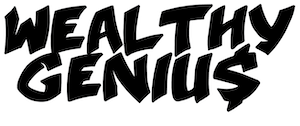How much is Christy Mathewson worth?
| Net Worth: | $3 Million |
|---|---|
| Profession: | Professional Baseball Hurler |
| Date of Birth: | August 12, 1880 |
| Country: | United States of America |
| Height: | 1.85 m |
About Christy Mathewson
He went to college at Bucknell University, where he played baseball, basketball, and football while also serving as the class president. Additionally, Mathewson belonged to the Phi Gamma Delta fraternity. In 1895, when he was only 14 years old, he played baseball for the first time in a semi-professional capacity.
From 1895 to 1897, Mathewson participated in football at Keystone Academy.
He made his professional debut in 1898, playing fullback for the Greensburg Athletic Association.
- Born: Aug. 12, 1880
- Hometown: Factoryville, Pa.
- Died: Oct. 7, 1925
- Height: 6-1
- Weight: 195 pounds
- Bats: Right
- Throws: Right
- Family: Wife, Jane
- Primary position: Pitcher
Mathewson played fullback for the Pittsburgh Stars of the first National Football League when he was a player with the New York Giants. However, in the middle of the team’s 1902 campaign, Mathewson vanished.
He pitched a single World Series record three shutouts in the 1905 World Series, helping the Giants win their first World Series title in their history. Due to his Christian views, Mathewson never threw on Sundays. During training for the American Army’s Chemical Warfare Service in World War I, Mathewson unintentionally came into contact with chemical weapons. Because of the impaired state of his respiratory system brought on by the exposure, he developed tuberculosis and passed away in Saranac Lake, New York, in 1925.
Before the majors:
began playing baseball in the semi-pro league at the age of fourteen.
football and baseball athlete who presided over his class at Bucknell University while in college.
He pitched for a number of Pennsylvania minor league clubs in addition to Bucknell.
was chosen for the 1898 Walter Camp All-American football team. He was a drop-kicker.
left school in 1899 to join the Taunton professional baseball team of the New England League.
He compiled a 20-2 record when pitching for Norfolk in the Virginia-North Carolina League the following season. In the middle of that season, the New York Giants paid $1,500 to purchase his contract. He participated in six games for the Giants in that year.
After going 0-3 with them that season, the Giants sent him back to Norfolk.
The Cincinnati Reds added him to Norfolk’s roster, but in December they traded him back to the Giants.
Career Highlights:
He was one of the best pitchers of all time throughout his 17 seasons in the major leagues, winning 373 games and losing 188. (.655).
played his first 16 seasons for the New York Giants before being traded to Cincinnati in his last season, during which he had one victory. He also oversaw the Reds for the following two seasons.
The career 2.13 ERA, which ranks seventh all-time, and the third-most shutouts are among the best ever in the major leagues (79). The 373 victories earned by Grover Cleveland Alexander and the National League are both tied for the most in MLB history.
Earned the triple crown of pitching in the National League in 1905 and 1908 (most victories, most strikeouts, and lowest ERA).
Over five seasons, the league’s top ERA (1905, 1908, 1909, 1911 and 1913).
NL strikeout leader five times (1903, 1904, 1905, 1907 and 1908).
13 seasons with 20 or more victories; four with 30 or more victories. From 1903 until 1914, he never had fewer than 22 victories.
steered the Giants to five National League championships and a World Series win in 1905. He pitched four-hit shutouts in Games 1 and 5, six-hit shutouts in Game 7, the game that decided the series, making him the series’ MVP. Three entire games were won in the course of a six-day stretch.
As a devout Christian, Mathewson abstained from throwing on Sundays.
is credited with inventing and throwing the first screwball, which he called his “fade-away.” For right-handed hitters, it was a reverse curve that would break in.
after retirement:
In 1918, two years after his baseball career came to an end, he enlisted in the American Army for World War I. During a training session, he unintentionally gassed himself, which eventually caused him to develop tuberculosis.
The following year, he came back to baseball and spent the next three years leading the Giants. At that time, he was battling the illness that he had developed a few years previously.
He returned to baseball in 1923, when he took on a part-time presidency of the Boston Braves.
Two years later, on the opening day of the 1925 World Series, he passed dead. The Pittsburgh Pirates and Washington Senators both wore black armbands during the series as a sign of respect.
was one of the first five baseball players to be inducted into the Baseball Hall of Fame, having been chosen in 1936. (joining Ty Cobb, Babe Ruth, Honus Wagner and Walter Johnson).
Later, Christy Mathewson-Memorial Stadium became the name of Bucknell’s football stadium.
Christy Mathewson Day is celebrated in Factoryville, Pennsylvania, on the Saturday before his birthday.



